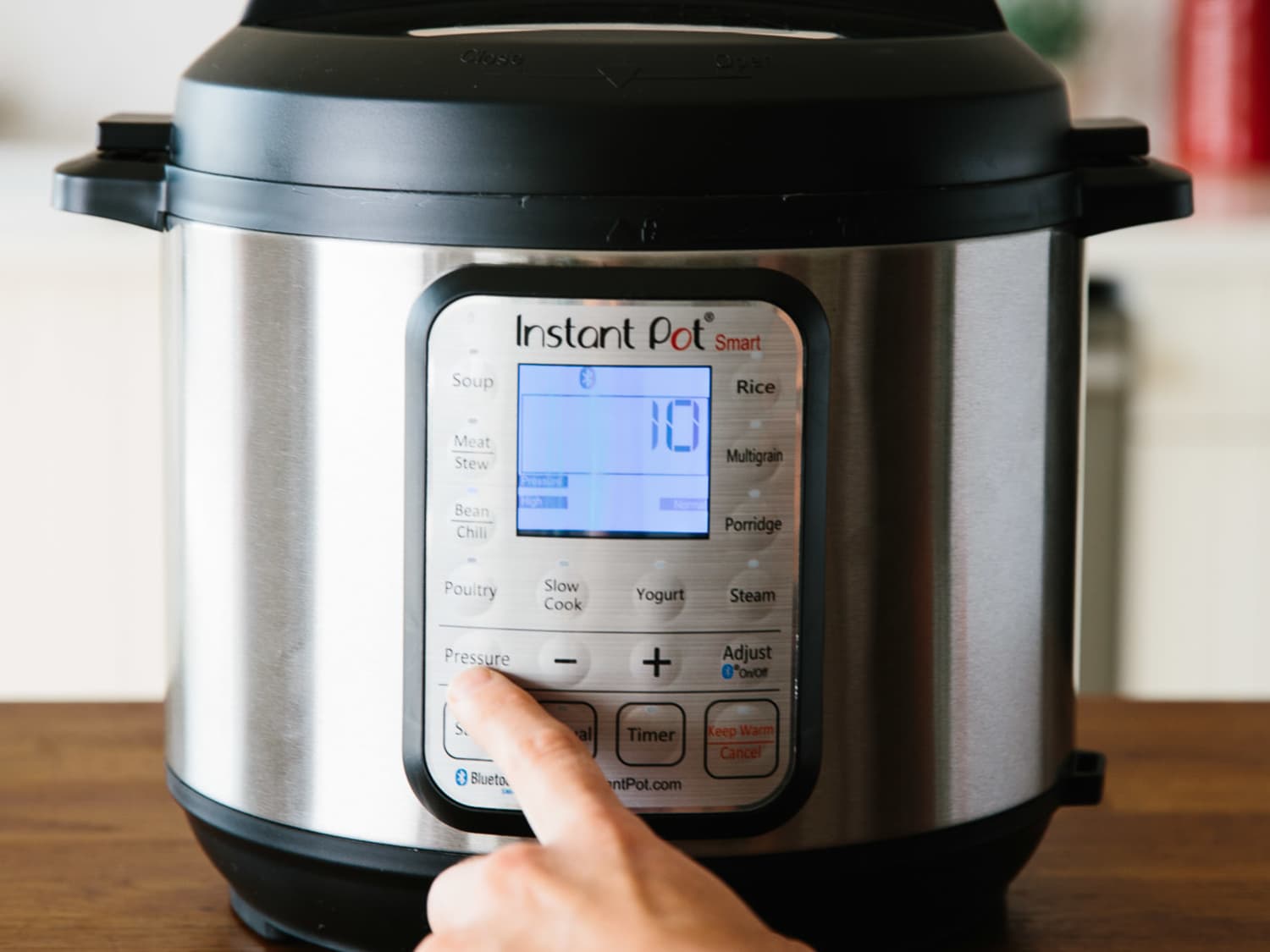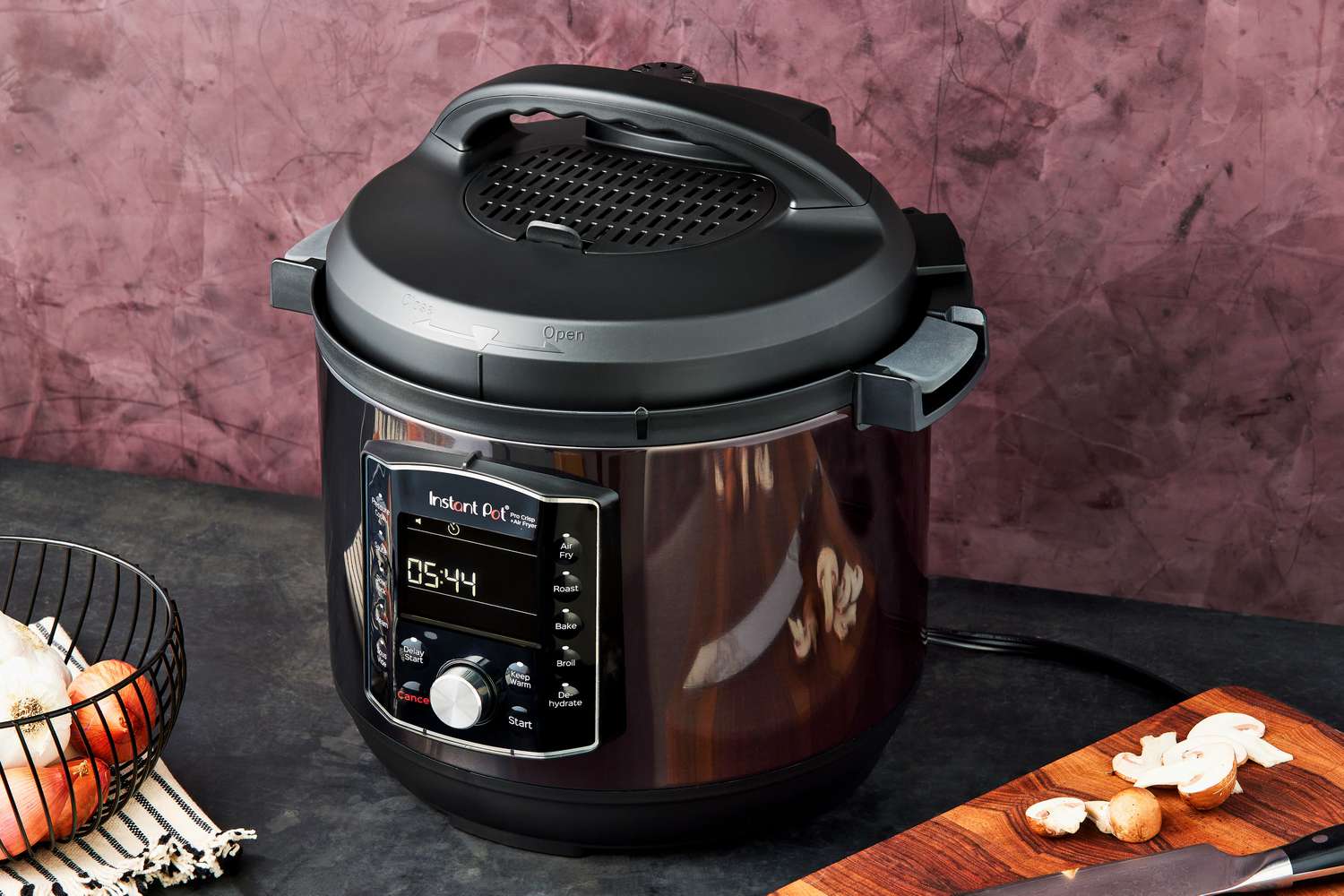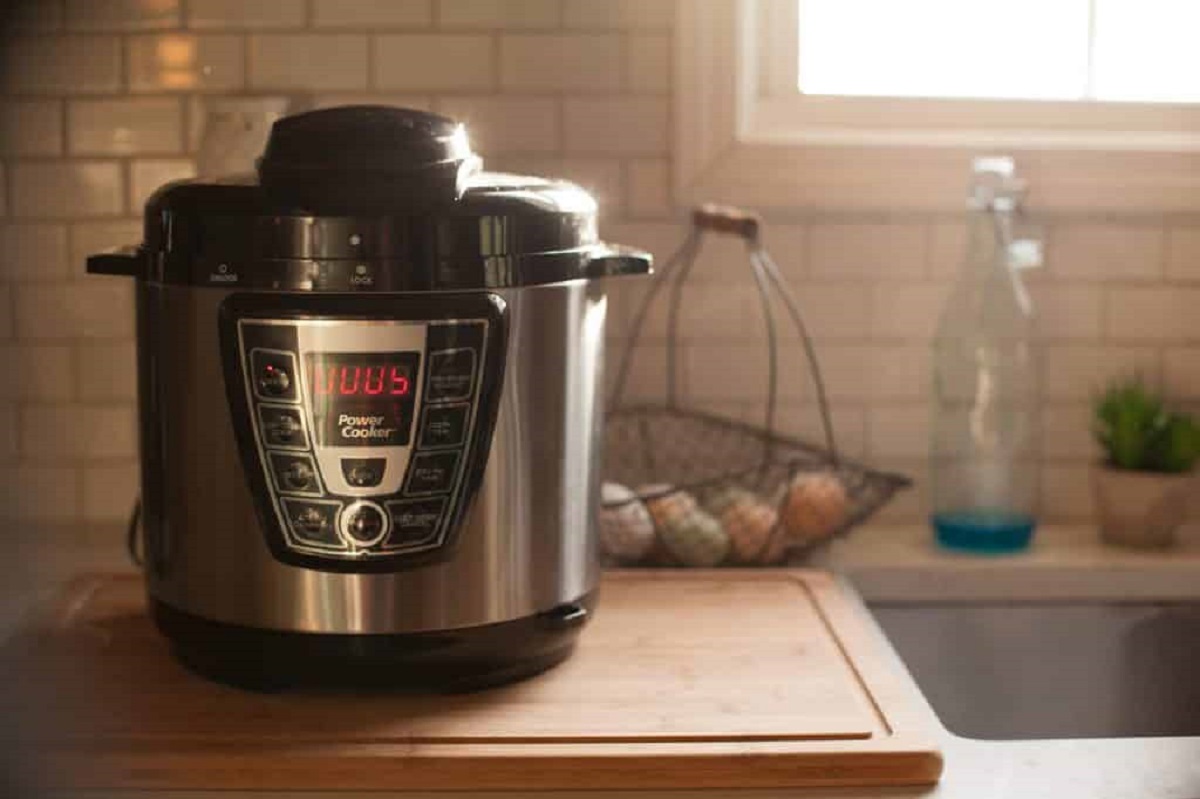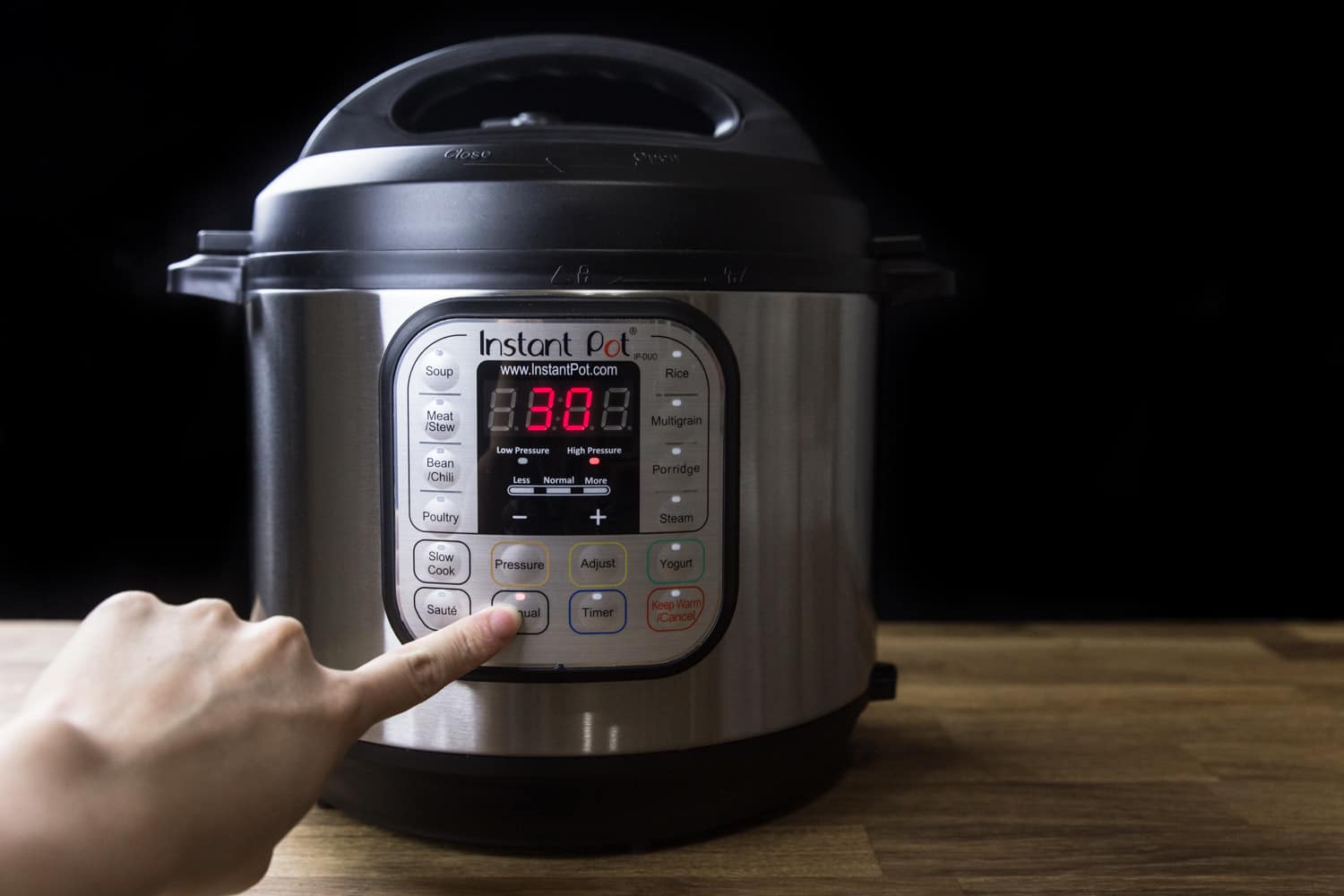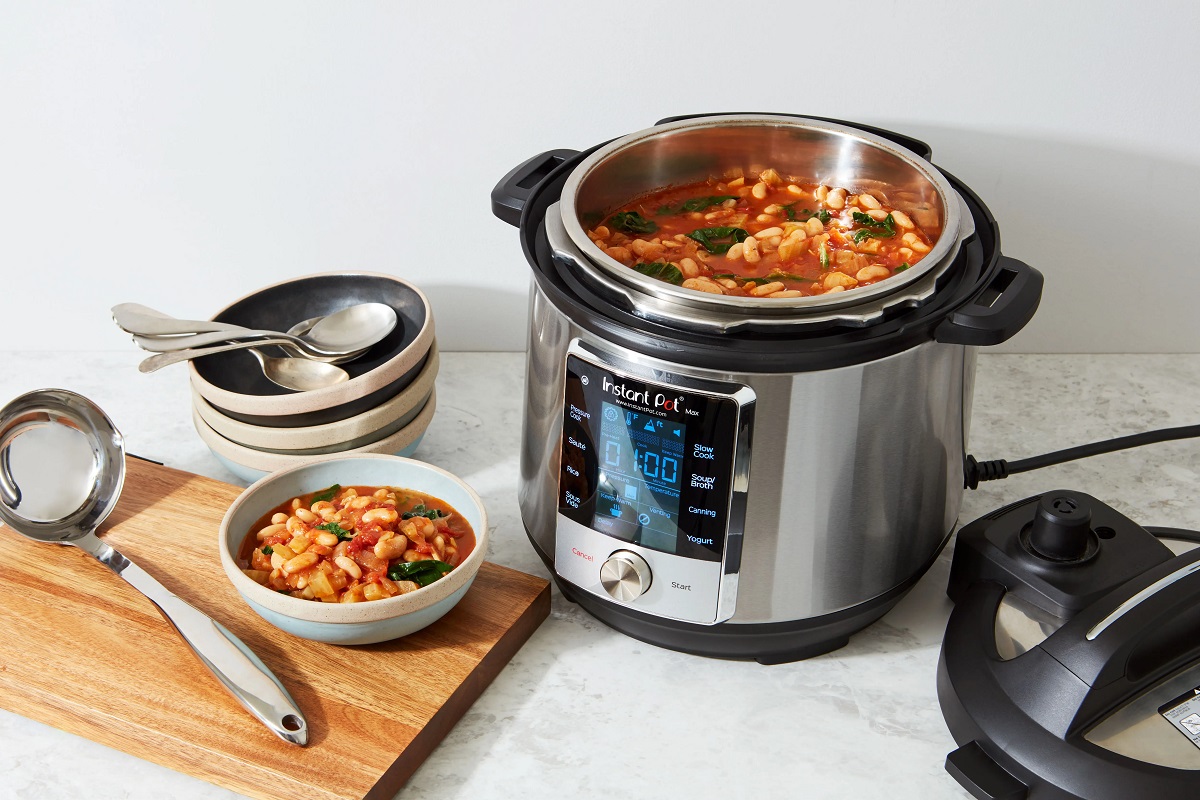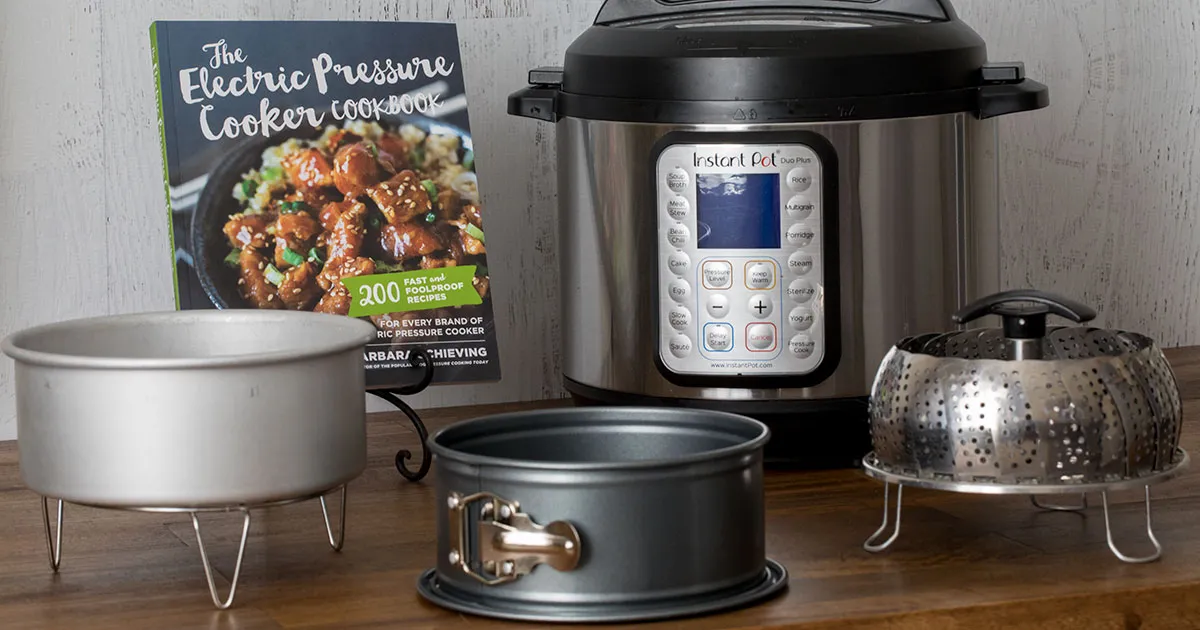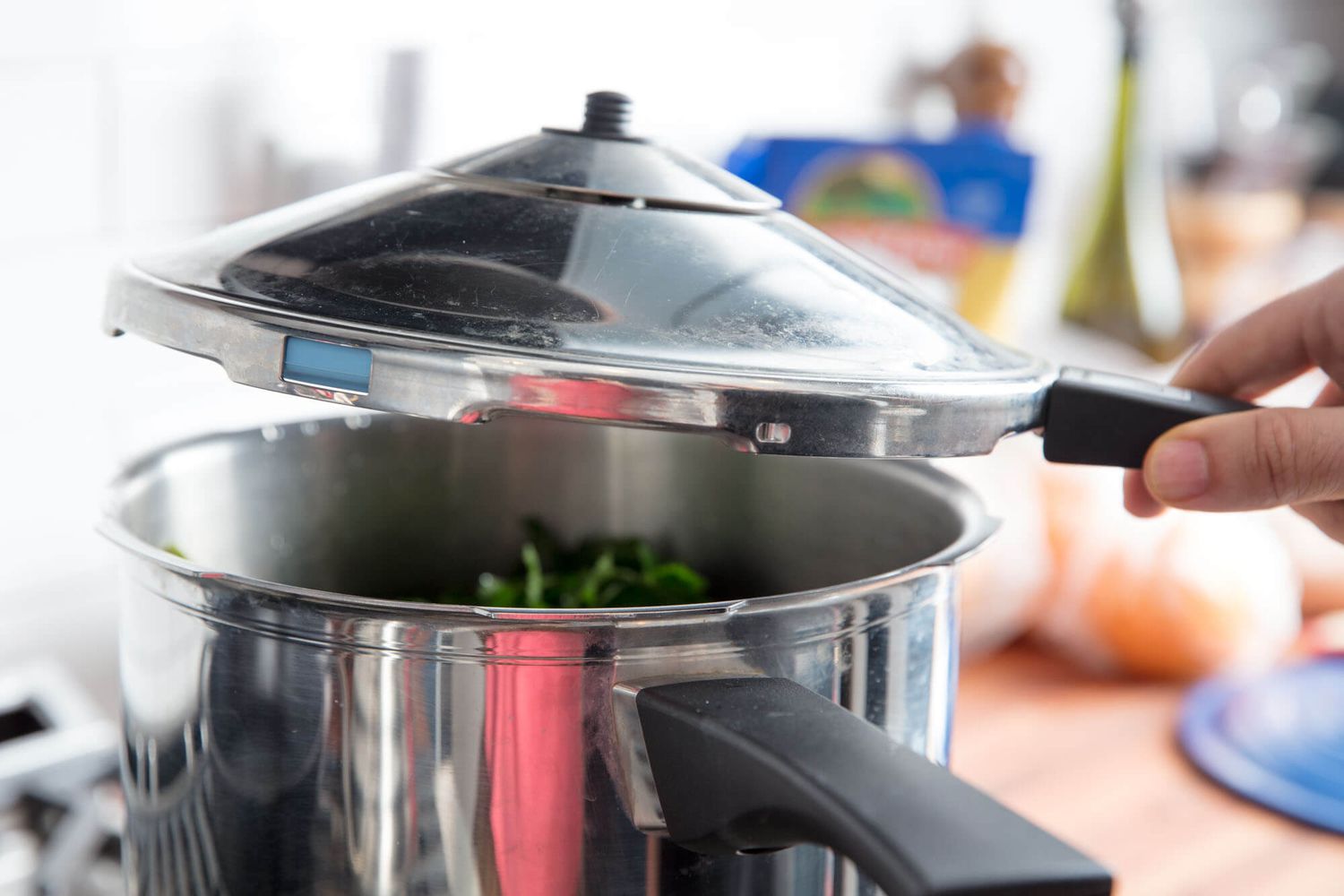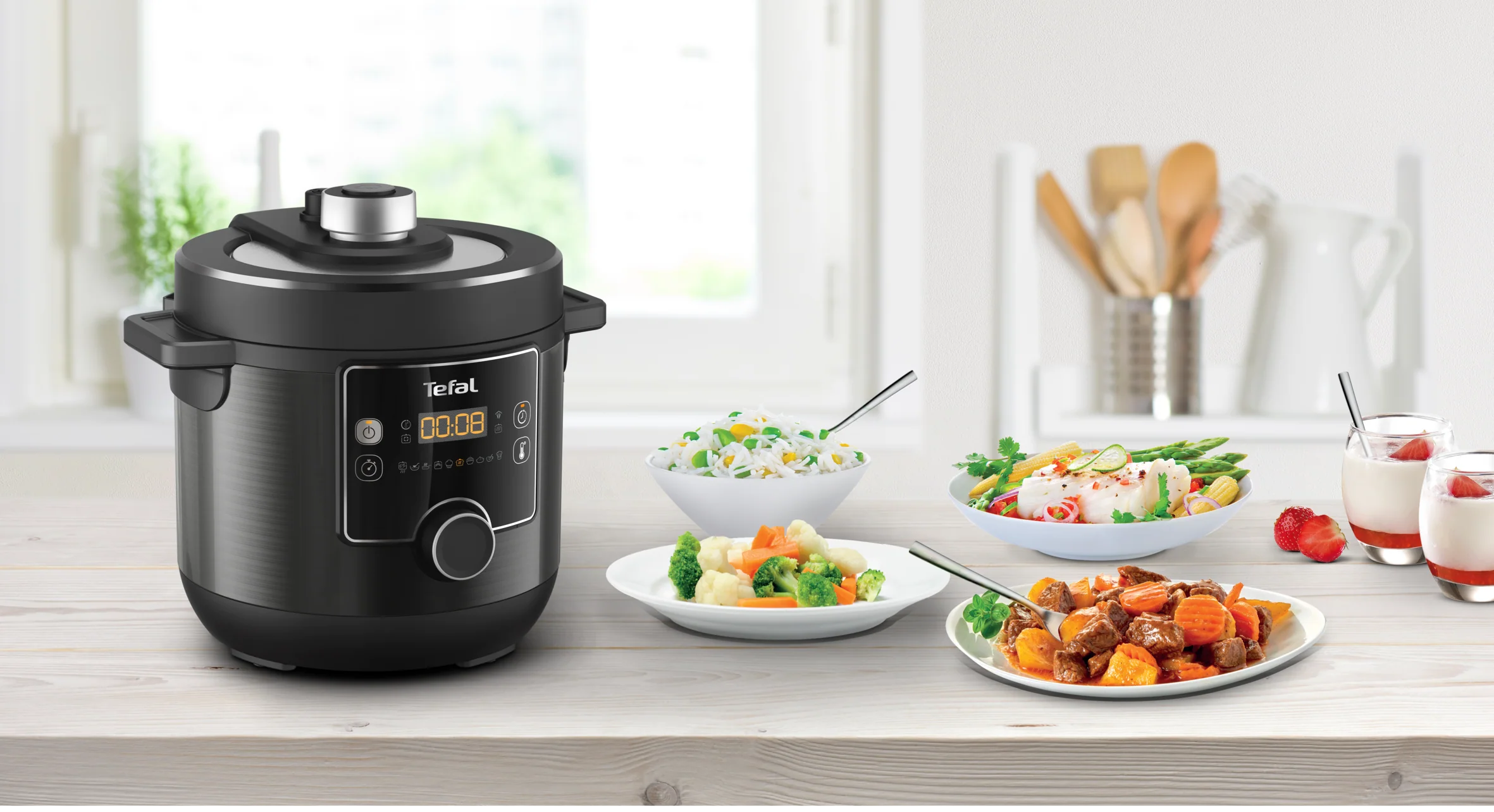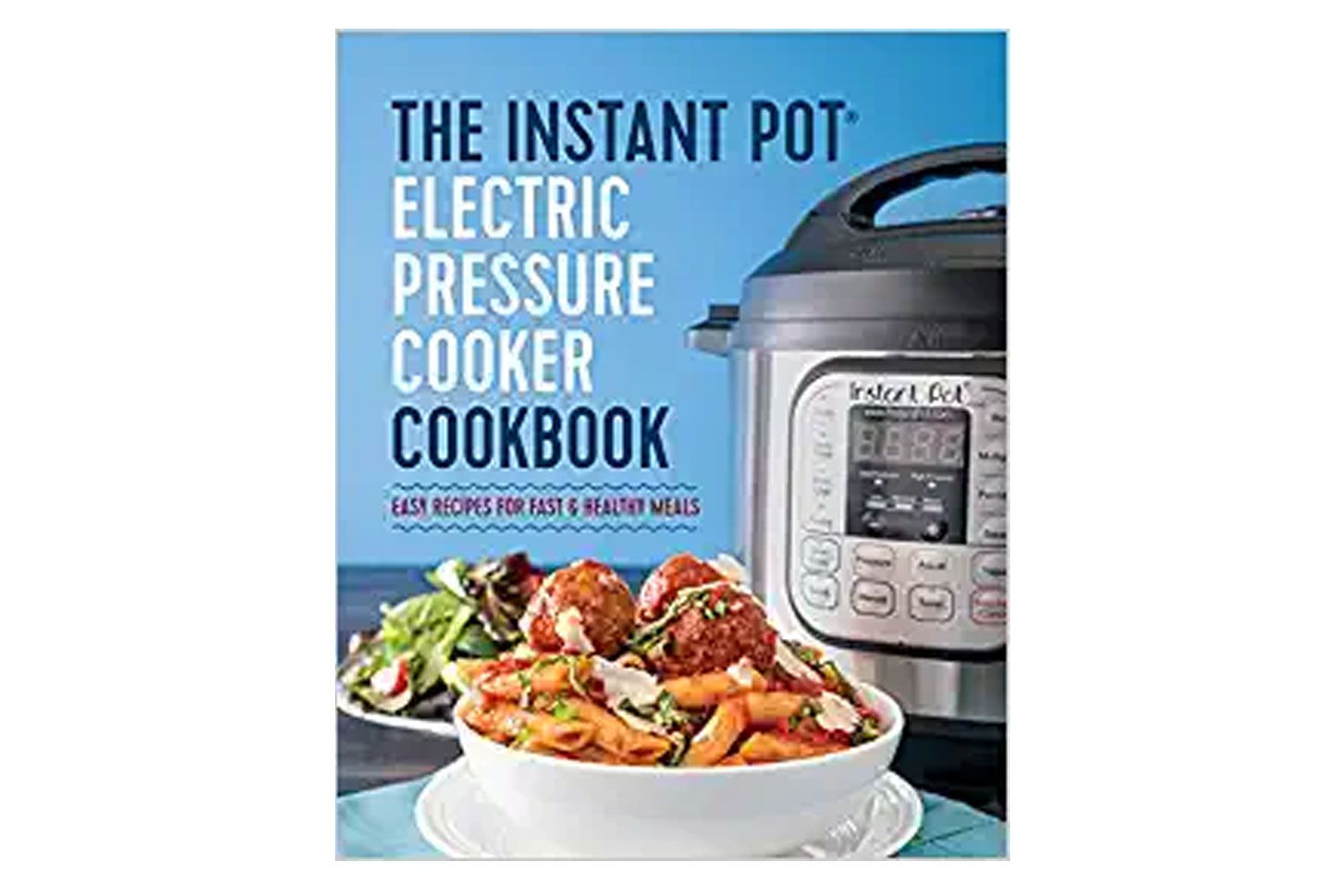Benefits of using high pressure in an electric pressure cooker
Electric pressure cookers have revolutionized the way we cook, and one of their key features is the ability to cook food under high pressure. This high-pressure cooking method offers a range of benefits that can significantly enhance your culinary experience. Let’s explore some of the advantages of using high pressure in an electric pressure cooker.
1. Faster cooking times: High pressure cooking significantly reduces cooking time compared to traditional stovetop methods. The intense pressure created by the electric pressure cooker allows food to cook up to 70% faster. This means you can enjoy tender and succulent meals in a fraction of the time it would take using conventional cooking methods.
2. Energy efficiency: Electric pressure cookers are designed to be energy-efficient. By cooking food quickly and effectively under high pressure, they require less energy to operate compared to other cooking appliances. This not only helps to save electricity but also reduces your carbon footprint.
3. Retained nutrients and flavors: One of the main advantages of high-pressure cooking is that it helps to retain the natural nutrients and flavors of the ingredients. The sealed environment of the pressure cooker prevents the loss of vitamins and minerals that can occur with other cooking methods. Additionally, the intense pressure enhances the infusion of flavors, resulting in more delicious and flavorful meals.
4. Tender and juicy meats: High pressure cooking is particularly beneficial for cooking meats. The pressure helps to break down the tough fibers in meat, resulting in exceptionally tender and juicy cuts. Whether you’re cooking a roast, stew, or ribs, the electric pressure cooker can transform tough cuts of meat into melt-in-your-mouth delicacies.
5. Versatile cooking options: High pressure cooking in an electric pressure cooker opens up a wide range of cooking possibilities. From soups and stews to risottos and desserts, the pressure cooker can handle it all. You can experiment with different recipes and ingredients, knowing that the high pressure will ensure even and thorough cooking.
6. Preserves food quality: High pressure cooking helps to preserve the quality of the food, especially when it comes to preserving the natural colors, textures, and flavors of fruits and vegetables. This makes it an ideal method for canning and preserving seasonal produce, allowing you to enjoy the taste of summer even during the colder months.
7. Easy cleanup: Using an electric pressure cooker for high-pressure cooking eliminates the need for multiple pots and pans, minimizing the mess and simplifying cleanup. Most electric pressure cooker pots are dishwasher safe, making it a convenient and efficient cooking option.
These are just a few of the many benefits of using high pressure in an electric pressure cooker. Whether you’re a busy professional looking to save time or a cooking enthusiast wanting to explore new flavors, the high-pressure cooking method can elevate your culinary creations to a whole new level.
How does high pressure work in an electric pressure cooker?
Understanding how high pressure works in an electric pressure cooker can help demystify this innovative cooking method. High pressure cooking relies on a combination of heat and steam to create a pressurized environment within the cooking pot. Let’s delve into the details of how high pressure works and why it is effective in an electric pressure cooker.
When the electric pressure cooker is turned on and sealed, it begins to heat up, generating steam inside the pot. As the temperature rises, the pressure inside the cooker increases, usually reaching a range of 9 to 15 pounds per square inch (psi). This pressure is maintained throughout the cooking process, ensuring consistent results.
The high pressure within the cooker raises the boiling point of water, allowing food to cook at a higher temperature than traditional cooking methods. This elevated temperature helps to break down tough fibers in meats and grains, resulting in faster and more tender cooking. The intense pressure also forces liquid, such as broth or marinade, to penetrate the ingredients, infusing them with flavors and creating deliciously rich and moist dishes.
The airtight seal of the pressure cooker prevents steam and heat from escaping, resulting in efficient cooking. As the steam condenses back into water, it creates a self-contained cooking environment, which prevents loss of moisture and flavors. This means that food cooked under high pressure retains its natural juices, resulting in succulent and flavorful meals.
Electric pressure cookers are equipped with safety mechanisms to ensure that the pressure does not exceed safe levels. These mechanisms include safety valves and pressure release systems that automatically regulate and release excess pressure when necessary. This helps to maintain a safe and controlled cooking environment, giving you peace of mind while using the electric pressure cooker.
With the advancements in technology, modern electric pressure cookers also come with programmable features. These features allow you to easily adjust the cooking time, pressure level, and temperature to suit different recipes. This versatility empowers you to explore a wide range of cooking options with precision and convenience.
In summary, high pressure in an electric pressure cooker is achieved by creating a sealed and pressurized environment inside the cooking pot. The elevated temperature and steam generated by the pressure cooker enable faster and more thorough cooking, resulting in tender and flavorful meals. The airtight seal and safety mechanisms ensure efficient and safe cooking, making the electric pressure cooker a valuable tool in any kitchen.
Understanding the importance of high pressure in cooking
High pressure cooking has gained popularity in recent years, thanks to its numerous benefits and ability to transform the way we prepare meals. But why is high pressure important in cooking, particularly in the context of electric pressure cookers? Let’s explore the significance of high pressure and how it impacts the cooking process.
1. Fast and efficient cooking: High pressure allows food to cook at a faster rate compared to conventional methods. By raising the boiling point of water, it speeds up the cooking process and reduces overall cooking time. This is especially advantageous for busy individuals or families looking to prepare meals quickly without compromising taste or quality.
2. Retention of nutrients: Nutritional value is a crucial consideration when cooking. High pressure cooking helps retain the natural vitamins, minerals, and antioxidants found in ingredients. The sealed environment of the pressure cooker prevents the loss of water-soluble nutrients that can occur with other cooking methods such as boiling or steaming. This means you can enjoy meals that are both delicious and packed with essential nutrients.
3. Enhanced flavors and tenderness: The intense pressure created in an electric pressure cooker allows flavors to infuse deeply into the food. The increased pressure and heat break down tough fibers, tenderizing meats and enhancing the overall taste and texture of your dishes. The result is succulent and flavorful meals that will impress your taste buds.
4. Reduction in cooking liquid: High pressure cooking requires less cooking liquid compared to traditional methods. The steam generated within the pressure cooker is trapped, condenses back into liquid, and recirculates within the pot. This means you can use less liquid in your recipes without compromising on taste or moisture, resulting in more concentrated flavors and reduced cooking time.
5. Versatility in cooking: High pressure cooking allows you to experiment with a wide range of ingredients and recipes. Whether you’re cooking meats, poultry, grains, legumes, or even delicate vegetables, the high pressure environment ensures even and thorough cooking. This versatility opens up endless possibilities in the kitchen, enabling you to explore new flavors and culinary techniques.
6. Preservation of food quality: Another significance of high pressure cooking is its ability to preserve the quality and freshness of food. Canning and preserving seasonal produce becomes easier with the high heat and tight seal of the pressure cooker. This allows you to enjoy the taste of summer fruits and vegetables even during the off-season.
7. Savings in energy and money: High pressure cooking is not only efficient in terms of cooking time but also energy consumption. The shorter cooking time of high pressure cooking means less energy is required to prepare meals. This can lead to savings on your utility bills and a reduced environmental impact.
Understanding the importance of high pressure in cooking is essential for harnessing the full potential of your electric pressure cooker. By utilizing the power of high pressure, you can minimize cooking time, enhance flavors, retain nutrients, and explore a wide range of culinary possibilities. So, embrace the high pressure cooking method and elevate your cooking to new heights!
Safety precautions when using high pressure in an electric pressure cooker
While high pressure cooking in an electric pressure cooker offers numerous benefits, it’s essential to prioritize safety when using this cooking method. The intense pressure and steam created within the cooker can pose potential risks if not handled properly. Here are some important safety precautions to keep in mind when using high pressure in an electric pressure cooker.
1. Read the user manual: Before using your electric pressure cooker, carefully read and familiarize yourself with the manufacturer’s instructions and safety guidelines. Each pressure cooker may have specific instructions and features that you need to be aware of to ensure safe operation.
2. Do not overfill: It’s crucial to avoid overfilling the pressure cooker. Most models have a maximum fill line indicated inside the pot. Overfilling can lead to excess pressure build-up, which can be dangerous and cause food to splatter out when the cooker is opened. Stick to the recommended fill levels to prevent any accidents.
3. Ensure proper sealing: Before starting the cooking process, make sure the lid is properly sealed. Check the rubber gasket for any signs of wear or damage, and ensure it is correctly positioned. A faulty seal can cause steam to escape or prevent the pressure cooker from achieving the necessary pressure, compromising the cooking process and safety.
4. Use the correct pressure release method: When the cooking cycle is complete, you must release the pressure properly to avoid any sudden releases of steam. Depending on the recipe and the type of food being cooked, you can use either the natural release method (allowing the pressure to drop naturally over time) or the manual release method (using the pressure release valve). Follow the instructions in your user manual to choose the appropriate method for each recipe.
5. Keep hands and face clear: When releasing the pressure manually, be cautious and keep your hands and face away from the steam vent or pressure release valve. The steam can be extremely hot and cause burns if you come into contact with it. Always use oven mitts or heat-resistant gloves when handling the pressure cooker.
6. Allow for proper cooling time: After cooking, it’s essential to allow the pressure cooker to cool down naturally before opening the lid. Rushing the process by trying to force open the lid can lead to steam burns. Patience is key to ensuring a safe and controlled release of pressure.
7. Regularly maintain and inspect your pressure cooker: Check the seals, valves, and other components of your pressure cooker regularly for any signs of wear or damage. Replace any worn-out parts or faulty components promptly to maintain safe operation.
8. Keep children and pets away: As with any kitchen appliance, it’s important to keep children and pets at a safe distance when using an electric pressure cooker. The high pressure and heat can be potentially hazardous. Always exercise caution and supervise when cooking with an electric pressure cooker.
By following these safety precautions, you can ensure a safe and worry-free cooking experience with high pressure in an electric pressure cooker. Remember, prioritizing safety is key to fully enjoying the convenience and benefits that this cooking method has to offer.
Tips and tricks for using high pressure effectively in an electric pressure cooker
Using high pressure in an electric pressure cooker can significantly enhance your cooking experience and save you time in the kitchen. To make the most of this cooking method, here are some helpful tips and tricks to ensure effective and successful high-pressure cooking.
1. Get familiar with cooking times: High pressure cooking requires precise timing. Familiarize yourself with the cooking times for different types of ingredients and recipes. Most electric pressure cooker recipes provide recommended cooking times, so be sure to follow them closely for the best results.
2. Use the built-in cooking presets: Many electric pressure cookers come with pre-programmed cooking presets for specific dishes like rice, soup, or meat. These presets automatically adjust the cooking time and pressure level, taking the guesswork out of high-pressure cooking. Take advantage of these presets to simplify your cooking process.
3. Use the natural release method for delicate foods: For delicate foods, such as seafood or certain vegetables, it’s best to use the natural release method. This allows the pressure to naturally release over time, preventing overcooking. It’s a gentle way to ensure that your delicate ingredients remain tender and retain their natural flavors.
4. Utilize the quick release for time-sensitive recipes: If you’re short on time and need to quickly release the pressure, utilize the quick release method. This involves carefully using the pressure release valve to manually release the steam. It’s crucial to follow the instructions in your user manual to perform this method safely.
5. Experiment with seasoning and spices: High pressure cooking can significantly enhance the flavors of your dishes. Take the opportunity to experiment with different seasonings, spices, and herbs to create unique and delicious flavors. The intense pressure helps these flavors infuse deeply into the ingredients, resulting in flavorful and aromatic meals.
6. Add enough cooking liquid: Unlike traditional stovetop cooking, electric pressure cookers require a precise amount of cooking liquid to build up the necessary steam and pressure. Ensure that you add enough liquid, such as broth or water, as indicated in your recipe. Insufficient liquid can lead to undercooked food or an inability to reach the desired pressure.
7. Do not fill the pressure cooker to the brim: It’s important not to overfill the pressure cooker. Leave some headspace to allow for expansion and prevent the food and liquid from blocking the pressure release valve. Consult your electric pressure cooker’s user manual for recommended fill levels to ensure safe and effective high-pressure cooking.
8. Cut ingredients into uniform sizes: To ensure even cooking, it’s advisable to cut your ingredients into uniform sizes. This helps to promote consistent cooking and ensures that all pieces are cooked to the desired level of tenderness.
9. Plan for natural pressure release time: When following a recipe, take into account the natural pressure release time. This is the time required for the pressure to naturally drop after cooking. For time-sensitive meals, factor in this additional time to achieve the desired cooking results.
10. Practice and experiment: The more you use your electric pressure cooker, the more you’ll become familiar with its nuances and capabilities. Don’t be afraid to experiment with different recipes and techniques to find your perfect balance of high-pressure cooking. With practice, you’ll develop a strong understanding of how to use high pressure effectively for your favorite dishes.
Implementing these tips and tricks will help you master the art of using high pressure effectively in your electric pressure cooker. Embrace the versatility and convenience that high-pressure cooking offers, and enjoy delicious, perfectly cooked meals with ease.
Common misconceptions about high pressure cooking in an electric pressure cooker
High pressure cooking in an electric pressure cooker has become increasingly popular, but there are still some misconceptions surrounding this cooking method. It’s important to separate fact from fiction to fully understand and utilize the benefits of high pressure cooking. Let’s debunk some common misconceptions about using high pressure in an electric pressure cooker.
1. It’s dangerous: One of the most common misconceptions is that high pressure cooking is dangerous. While it’s true that the pressure inside the cooker can be intense, modern electric pressure cookers are equipped with safety mechanisms that prevent accidents. As long as you follow the manufacturer’s instructions, maintain the pressure cooker properly, and practice safety precautions, high pressure cooking is safe and effective.
2. It destroys nutrients: Another misconception is that high pressure cooking destroys nutrients in food. In reality, high pressure cooking preserves more nutrients compared to other cooking methods that involve prolonged exposure to heat and water. The shorter cooking time and the sealed environment help retain the vitamins, minerals, and antioxidants present in the ingredients.
3. It dries out food: Some believe that high pressure cooking can dry out food. However, the opposite is true. The sealed environment of the electric pressure cooker traps moisture, resulting in succulent and moist dishes. The high pressure and temperature help to tenderize meats, ensuring juicy and flavorful results.
4. It’s only for certain types of food: There’s a misconception that high pressure cooking is limited to specific types of food, like stews or soups. In reality, high pressure cooking is versatile and can be used for a wide variety of dishes, including grains, vegetables, meats, seafood, and even desserts. The high pressure environment ensures even cooking and enhances the flavors in a variety of recipes.
5. It requires constant monitoring: Some believe that high pressure cooking in an electric pressure cooker requires constant monitoring and adjustment. However, once the pressure cooker reaches the desired pressure level, it maintains a steady pressure throughout the cooking process. This means you can set the timer and let the pressure cooker do the work without the need for constant oversight.
6. It’s difficult to clean: Cleaning an electric pressure cooker after high pressure cooking is often perceived as complicated and time-consuming. While spills and splatters may occur during the cooking process, most pressure cooker pots are removable and dishwasher safe. Additionally, the non-stick surfaces make cleaning easy, allowing for quick and convenient cleanup.
7. It’s only for experienced cooks: Some people believe that high pressure cooking is only suitable for experienced cooks. However, electric pressure cookers are designed to be user-friendly, with pre-programmed settings and clear instructions. Even beginners can achieve excellent results with a little practice and following recipes.
8. It’s a slow-cooking method: Although high pressure cooking may sound similar to slow cooking, they are actually different methods. High pressure cooking utilizes intense heat and pressure to cook food quickly, while slow cooking involves long, slow simmering at low temperatures. High pressure cooking can significantly reduce cooking times, making it a time-saving option for busy individuals.
By dispelling these common misconceptions, you can fully appreciate the benefits and versatility of high pressure cooking in an electric pressure cooker. Embrace this cooking method with confidence, knowing that it is safe, efficient, and capable of producing delicious and nutritious meals in a fraction of the time.
Recipes that utilize high pressure in an electric pressure cooker
High pressure cooking in an electric pressure cooker opens up a world of culinary possibilities. From tender meats to perfectly cooked grains, the high pressure environment of an electric pressure cooker can take your recipes to the next level. Here are some mouthwatering recipes that make excellent use of high pressure cooking:
1. Pulled Pork: High pressure cooking is a game-changer for preparing tender and flavorful pulled pork. Simply season the pork shoulder with your favorite spices, add some broth or barbecue sauce, and set the electric pressure cooker to high pressure for around 70 minutes. The result is succulent, fall-apart pulled pork that will satisfy any barbecue lover’s cravings.
2. Risotto: Traditionally, making risotto requires constant stirring and careful temperature control. However, in an electric pressure cooker, you can achieve a creamy and perfectly cooked risotto with minimal effort. Sauté your aromatics, add the rice and broth, then cook on high pressure for a few minutes. Allow for a natural pressure release, and voila! A delicious risotto ready to be enjoyed.
3. Beef Stew: High pressure cooking is ideal for preparing hearty and comforting beef stew. Simply brown the beef, add in your vegetables, herbs, and broth. Set the electric pressure cooker to high pressure for around 30 minutes, and let it work its magic. The result is melt-in-your-mouth tender beef, rich flavors, and a comforting stew that will warm your soul.
4. Chili: Whip up a crowd-pleasing chili in no time with the help of high pressure cooking. Sauté your onions, garlic, and spices, then add in your ground beef or beans, diced tomatoes, broth, and chili seasoning. Cook on high pressure for just a few minutes, and you’ll have a flavorful and hearty chili that tastes like it has been simmering for hours.
5. Brown Rice: Cooking perfect brown rice can be a challenge, but with an electric pressure cooker, it becomes effortless. Combine your brown rice and water or broth in the pressure cooker, and cook on high pressure for around 20-25 minutes, depending on the specific type of rice. The result is fluffy, evenly cooked brown rice that is ready to be served as a side dish or as a base for other recipes.
6. Cheesecake: Yes, you can even make cheesecake in an electric pressure cooker! The high pressure environment helps to create a smooth and creamy texture. Prepare your cheesecake mixture, pour it into a springform pan, and place it on a trivet inside the pressure cooker. Cook on high pressure for the specified time, allow for a natural pressure release, and refrigerate. The result is a decadent and perfectly set cheesecake.
7. Chicken Noodle Soup: Craving a comforting bowl of chicken noodle soup? High pressure cooking can get it on the table in no time. Combine chicken, vegetables, broth, and seasonings in the electric pressure cooker, and cook on high pressure for around 10 minutes. The result is a delicious and nourishing bowl of homemade chicken noodle soup that will warm you up on a cold day.
These are just a few examples of the many recipes that take advantage of high pressure cooking in an electric pressure cooker. Feel free to explore different cuisines and experiment with your favorite ingredients to create delicious and convenient meals that will impress your family and friends.
Frequently asked questions about high pressure in an electric pressure cooker
Using high pressure in an electric pressure cooker can seem intimidating if you’re new to this cooking method. To help you become more familiar with high pressure cooking, here are some frequently asked questions and their answers:
1. Is high-pressure cooking safe?
Yes, high pressure cooking in an electric pressure cooker is safe when proper precautions are taken. Electric pressure cookers include safety features to prevent excessive pressure build-up, and they are designed to release pressure safely.
2. How does high pressure affect cooking times?
High pressure cooking significantly reduces cooking times compared to traditional stovetop methods. The higher temperature and pressure inside the pressure cooker enable faster and more efficient cooking.
3. Can I adjust the pressure level during cooking?
No, it is not recommended to adjust the pressure level during cooking. Once the electric pressure cooker reaches the desired pressure, it is crucial to maintain that pressure for the specified cooking time for optimal results.
4. How does high pressure affect the tenderness of meat?
High pressure helps to tenderize meats by breaking down their tough fibers. The increased pressure and temperature allow the collagen in the meat to convert into gelatin, resulting in tender and juicy cuts.
5. Can I use high pressure for delicate foods?
While high pressure is ideal for cooking tougher cuts of meat and grains, delicate foods such as seafood and some vegetables require shorter cooking times to avoid overcooking. In these cases, it’s recommended to use the natural release method or reduce the cooking time.
6. Do I need to adjust liquid amounts for high pressure cooking?
High pressure cooking requires less liquid than traditional stovetop cooking methods. The steam generated and trapped within the pressure cooker provides enough moisture for the cooking process. Be sure to follow your recipe’s recommended liquid amounts for optimal results.
7. Can I use high pressure for canning or preserving?
Yes, high pressure cooking in an electric pressure cooker is suitable for canning and preserving foods. The high heat and sealed environment are ideal for safe and effective canning practices. However, it’s essential to follow specific canning guidelines and recipes to ensure proper preservation and safety.
8. Can I open the pressure cooker immediately after cooking?
No, it is important to allow for a natural pressure release or follow the recipe’s recommended release method after cooking. Forced opening can result in sudden steam release, which can cause burns. Follow the instructions for proper pressure release to ensure safety.
9. Can I use other cooking methods in an electric pressure cooker?
Electric pressure cookers are versatile appliances that can perform various cooking methods, including sautéing, steaming, and slow cooking in addition to high pressure cooking. Check for specific features and settings on your model to explore different cooking methods.
10. How do I clean the electric pressure cooker after high pressure cooking?
Cleaning an electric pressure cooker is straightforward. Most pressure cooker pots are removable and dishwasher safe. Follow the manufacturer’s instructions for cleaning and make sure to thoroughly clean the sealing ring, valves, and any other removable parts.
By understanding these frequently asked questions about high pressure cooking in an electric pressure cooker, you can approach this cooking method with confidence and enjoy the convenience and flavors it brings to your kitchen.







